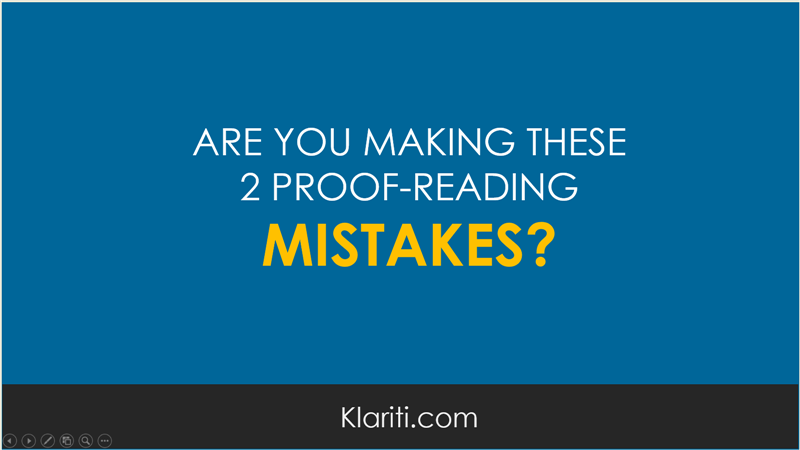Business Writing
Are you making these two proof-reading mistakes?
Proof-reading. A bit like flossing your teeth, isn’t it? You know it’s good for you, you know you should do it, but you still don’t want to do it.
Why is proofreading so hard?
I think it’s the approach we take.
For example, if you leave the proof-reading to the very end, you’ll probably be overwhelmed, anxious, and prone to make mistakes.
Instead, develop a plan, break it into ‘chunks’ and work on it as you go along. Here are two mistakes to avoid.
[Download templates checklists, and forms]
What’s the first mistake to avoid?
You don’t have a plan. A plan is a map. If you don’t have a map…
So, if you just sit down, start reading the document, looking for typos, you’ll soon deviate, run out of energy and miss things.
And, of course, your mind will start to wander…
Having a plan is your starting point.
Otherwise, at best, you’ll catch a few typos, but miss the big mistakes.
What’s the second mistake?
Ignoring the plan. You think you don’t need it. In your mind, you know what you’re going to do. Which is true until you get flustered, lose patience, or get interrupted.
Do this sound familiar?
You start out looking for typos, then start checking the structure, then looking at the table numbering, then the index, then back to the typos, and then…
This ‘scatter gun’ approach doesn’t work.
Maybe you ‘feel’ that you’ve checked the document but, in truth, you’ve just scratched the surface.
Here’s a better way to proof-read your documents.
- Add a task to your MS Outlook to proofread first thing in the morning.
- Allocate 15 minutes every day to sharpening your skills.
- Create a checklist in Excel.
- Add rows for spelling, format, accuracy, table, index, structure, language, and other criteria.
- Print out one chapter of a document.
- Review the chapter by examining one area at a time. For example, check the spelling only. Then stop, go back to the start and check all the tables. Then check the structure. Then check the technical accuracy and so on.
- Work in 15-minute blocks. After that your attention flags.
- Get up, stretch, take a quick walk, then start again
Summary
Instead of charging at the document and trying to proofread it in one go, break down this monolithic task into small manageable activities.
Resist the voice that tells you to hurry up and get it over with. You’ll miss things that way.
Focus on one area at a time when reviewing.
If you do this, you’ll feel more confident when signing off the document.
[Download templates checklists, and forms]


